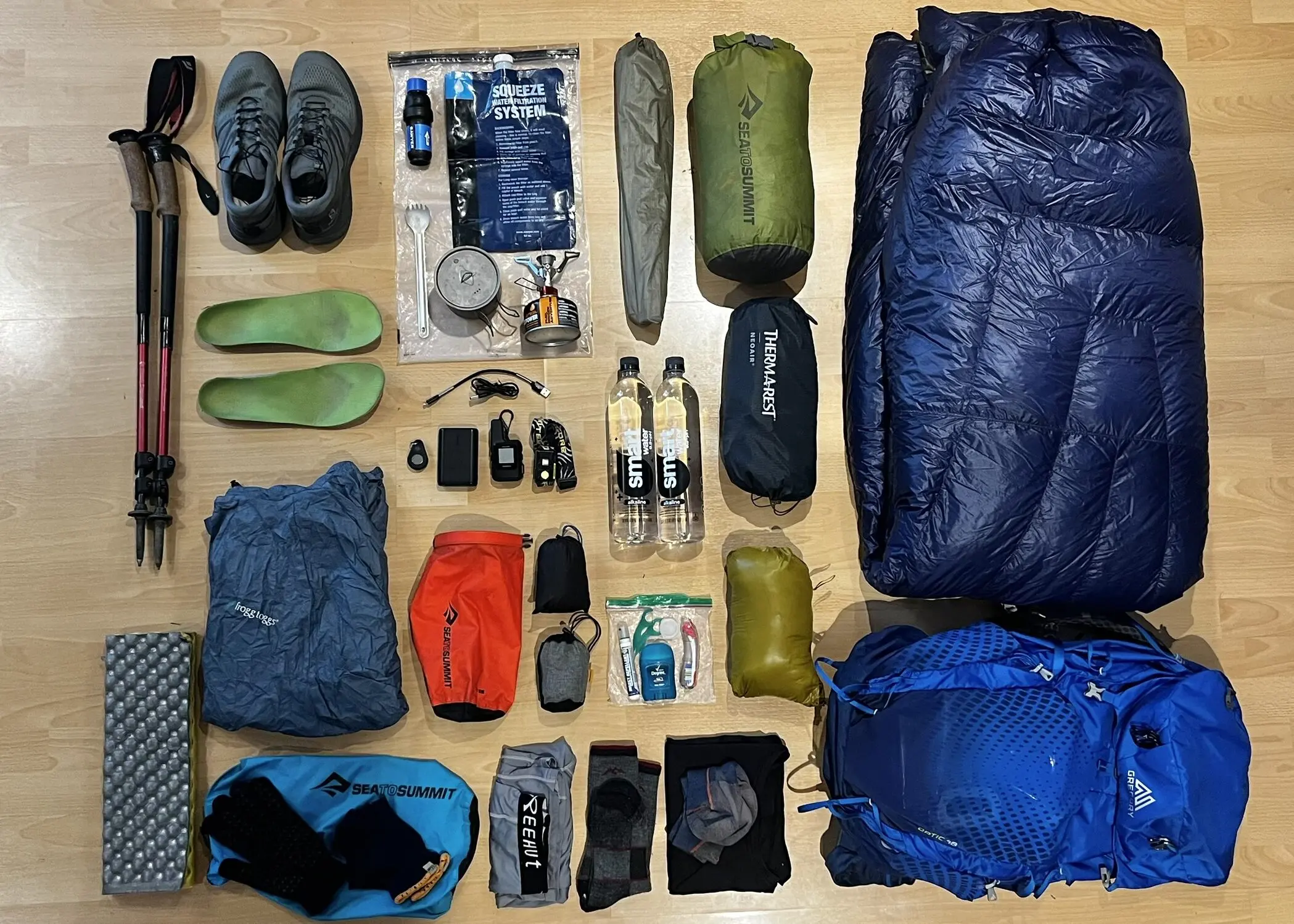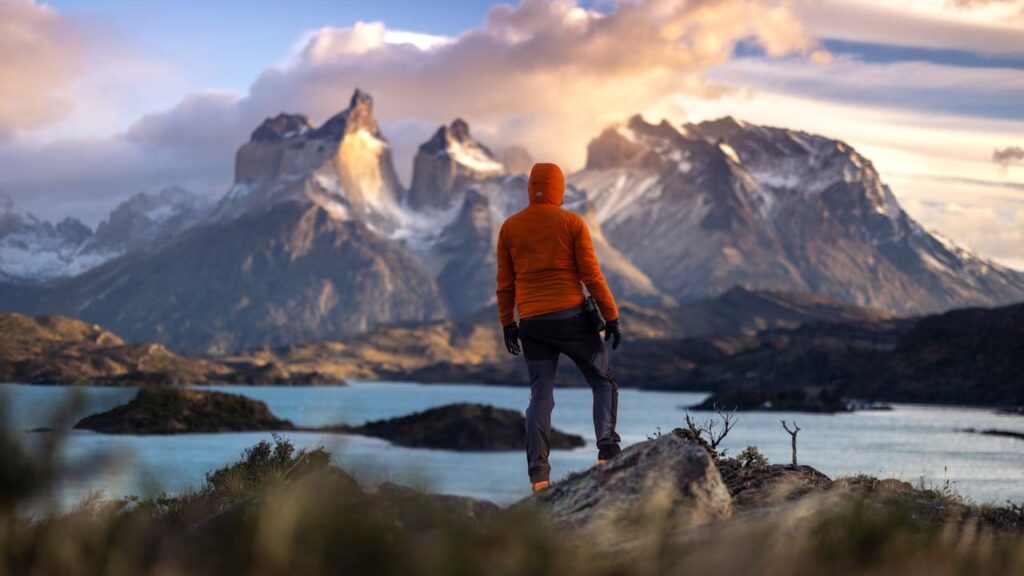Planning Your First Backpacking Trip: A Step-by-Step Guide

Planning your first backpacking trip can feel like stepping into the unknown—but that’s part of the adventure. It’s a chance to disconnect from the daily grind, reconnect with nature, and challenge yourself in ways that can be deeply rewarding. With the right preparation, even a total beginner can turn their first outing into an unforgettable adventure.
This guide will help you plan your first backpacking trip with confidence. From picking the perfect trail to packing your gear, you’ll learn everything you need to know to get started. Let’s dive in.
Start with the Right Mindset
Backpacking isn’t just about reaching a destination—it’s about the journey. Before diving into logistics, reflect on your goals. Are you craving a peaceful escape or looking for a physical challenge? Do you want to build confidence in the outdoors or spend quality time with friends? These intentions will shape your trip and keep you motivated when things get tough.
It’s also important to embrace a beginner’s mindset. Mistakes are part of the process. Every experienced backpacker started somewhere, and your first trip is an opportunity to learn, adapt, and grow. With a curious and flexible attitude, you’ll be ready for whatever the trail throws your way.
Choose a Beginner-Friendly Trail

Picking the right trail is key to a successful first backpacking trip. Aim for something that matches your fitness level and offers an approachable introduction to the backcountry. A short, well-maintained trail with moderate elevation gain is ideal. Look for established campsites and reliable water sources to simplify your planning.
Local state parks, national forests, or recreation areas often have beginner-friendly options. Use resources like AllTrails, Gaia GPS, or FarOut to scout trails and read reviews from other hikers. When in doubt, ask for recommendations at outdoor stores or online backpacking communities.
For your first trip, avoid overly remote or challenging routes. Stick to trails with clear signage and cell service, if possible. This will reduce stress and allow you to focus on learning the basics.
Prepare a Flexible Itinerary
With your trail selected, plan a simple itinerary. Map out your daily mileage, campsites, and water sources, but keep things flexible. Weather, trail conditions, and your energy levels can all affect your schedule, so it’s best to leave room for adjustments.
When estimating how far you’ll hike each day, start conservatively. Five to seven miles per day is a reasonable range for beginners. Consider elevation gain, as steep climbs can slow your pace more than you expect.

Plan to reach your campsite with plenty of daylight left. Setting up camp in the dark can be stressful, especially if you’re unfamiliar with your gear. Take advantage of the extra time to relax, explore, and soak in the natural beauty around you.
Gear Up for Success

Investing in the right gear can make your first backpacking trip safer and more enjoyable. While it’s tempting to buy all the latest gadgets, focus on the essentials first. The “Big Three”—your backpack, shelter, and sleep system—are the foundation of your setup.
Choose a backpack in the 40- to 60-liter range for a weekend trip. Make sure it fits well, with the weight distributed evenly across your hips and shoulders. For shelter, a lightweight tent or hammock will keep you protected from the elements. Pair this with a sleeping bag rated for the expected temperatures and an insulated sleeping pad for comfort and warmth.
Beyond the Big Three, you’ll need a cooking system, water filter, first aid kit, and appropriate clothing. Moisture-wicking layers, sturdy footwear, and rain gear are non-negotiable. If you’re unsure about committing to expensive equipment, consider renting or borrowing gear for your first trip.
Check out my Beginner’s Backpacking Gear Checklist for a full list of essential gear!
Pack Light but Smart
Overpacking is one of the most common mistakes for first-time backpackers. Every ounce counts when you’re carrying it on your back, so pack only what you truly need. Lay out your gear before your trip and ask yourself, “Do I really need this?” If the answer isn’t a confident yes, leave it behind.
When packing your backpack, distribute the weight strategically. Place heavier items like your food bag and water reservoir close to your back to maintain balance. Use smaller compartments or stuff sacks to keep your gear organized and accessible.
Focus on calorie-dense, lightweight foods like dehydrated meals, trail mix, and energy bars. Bring more snacks than you think you’ll need—you’ll burn a lot of calories on the trail. And don’t forget to pack a trash bag for your waste; Leave No Trace principles mean everything you bring in must come back out.
Test Your Gear at Home
Before you head into the wilderness, take the time to test your gear. Set up your tent in the backyard, light your stove, and pack your backpack to see how it feels. Familiarity with your equipment will save you time and frustration on the trail.

Practice common skills like filtering water, reading a map, and using a compass. Even if you’re relying on a GPS app, having a paper map and compass as a backup is crucial. Knowing how to use them is even more important.
By testing and practicing at home, you’ll start your trip with confidence, knowing you can rely on your gear when it counts.
Plan for the Weather
Weather in the backcountry can be unpredictable, so always check the forecast before your trip. Pack clothing and gear for the worst-case scenario, even if the forecast looks perfect. A lightweight rain jacket and extra layers are worth their weight in gold if conditions take a turn.

Temperature swings between day and night can be significant, so bring warm layers even for summer trips. Insulated gloves, a hat, and dry socks can make a huge difference in your comfort level if the temperature drops unexpectedly.
If severe weather is in the forecast, consider postponing your trip. Safety always comes first, and there will be plenty of opportunities to backpack in better conditions.
Stay Hydrated and Fueled
Proper hydration and nutrition are critical for staying energized and safe on the trail. Research your route to identify water sources and plan to refill regularly. Carry a water filter or purification tablets to treat water from streams, lakes, or springs.

Aim to drink at least two to three liters of water per day, adjusting for heat and exertion. For food, pack enough calories to sustain your energy. Quick, no-cook options like trail mix and nut butter are great for on-the-go snacks, while a hot meal at the end of the day can be a comforting reward.
Embrace Leave No Trace
Backpacking is about immersing yourself in nature without leaving a trace. Follow the Leave No Trace principles to protect the environment and ensure the wilderness remains pristine for future generations.

This means camping on durable surfaces, packing out all trash (even food scraps), and avoiding damage to plants or wildlife. Use a trowel to dig a small cat hole for human waste, at least 200 feet from water sources, trails, or campsites. And never burn trash in your campfire—it’s unsightly, unsafe, and harmful to the environment.
By respecting nature, you’ll contribute to the preservation of the wild places you love.
Adapt to Challenges
Even with meticulous planning, things can and will go wrong on the trail. Your tent might collapse in the wind, your stove might malfunction, or you might get blisters after the first mile. These moments are all part of the adventure.
The key is to stay calm and adapt. Pack a small repair kit with items like duct tape, safety pins, and a multitool to handle minor gear issues. Treat blisters and other small injuries immediately to prevent them from worsening. And remember, it’s okay to adjust your itinerary if conditions demand it.
Every challenge is an opportunity to learn, and each trip will make you a stronger, more resourceful backpacker.
Soak It All In
Your first backpacking trip is about more than just reaching a destination—it’s about the experience. Take time to pause, look around, and appreciate the beauty of the wilderness. Watch the sunrise from your tent, listen to the rustle of leaves, and savor the simple pleasure of a warm meal after a long day on the trail.

Backpacking isn’t a race. It’s a chance to slow down, unplug, and reconnect with the natural world. By embracing the journey, you’ll create memories that stay with you long after the trip is over.
Reflect and Grow
When you return home, take time to reflect on your trip. What went well? What could you improve next time? Write down lessons learned and start thinking about your next adventure. Each trip builds your skills and confidence, paving the way for more ambitious goals in the future.
Backpacking is a journey of growth. With every step, you’ll deepen your connection to nature, yourself, and the people you meet along the way.
Final Thoughts

Planning your first backpacking trip takes effort, but it’s a rewarding process that sets the stage for unforgettable experiences. With the right preparation, you’ll be ready to embrace the challenges and joys of life on the trail.
To help you get started, download my free Beginner’s Backpacking Gear Checklist, packed with all the essentials you’ll need. And for more tips and inspiration, subscribe to my YouTube channel and join our growing community of adventurers.
Happy trails—see you out there!
Affiliate Disclosure
This page contains affiliate links. If you click on one of these links and make a purchase, I may earn a small commission at no additional cost to you. These commissions help support the creation of free content and resources for the backpacking community. Rest assured, I only recommend products that I personally use and trust to enhance your backpacking experience. Thank you for your support!
Join Our Community of Adventure Seekers!
Get the latest backpacking tips, gear guides, and trail inspiration sent directly to your inbox.
Sign up to start exploring!

